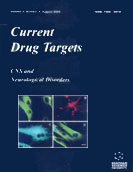Abstract
The endogenous cannabinoids (endocannabinoids) are bioactive signaling molecules, that show diverse cellular and physiological effects and play various roles in the central nervous system, as well as in the periphery. The discovery of N-arachidonoylethanolamine (anandamide, AEA) and of the enzyme that terminates its signaling, i. e. fatty acid amide hydrolase (FAAH), has inspired pharmacological strategies to augment endocannabinoid tone and biological activity through inhibition of FAAH. Here we discuss the role of natural endocannabinoid derivatives, like the hydroxyanandamides (OH-AEAs) generated from AEA via lipoxygenase activity, as powerful inhibitors of FAAH. We propose that these compounds, by reversibly inhibiting FAAH, may control in vivo the endocannabinoid tone. We consider the theoretical structural properties of OH-AEAs and other natural inhibitors of FAAH, based on the calculation of theoretical molecular descriptors commonly used in Quantitative Structure Activity Relationship (QSAR) studies. The QSAR properties of OH-AEAs and congeners suggest that they could act at different specific sites of FAAH, thus confirming their potential value as templates for the development of next-generation therapeutics.
Keywords: anandamide hydrolase, endocannabinoids, inhibition, lipoxygenase, molecular modeling, nervous system, QSAR, therapy
 2
2

















